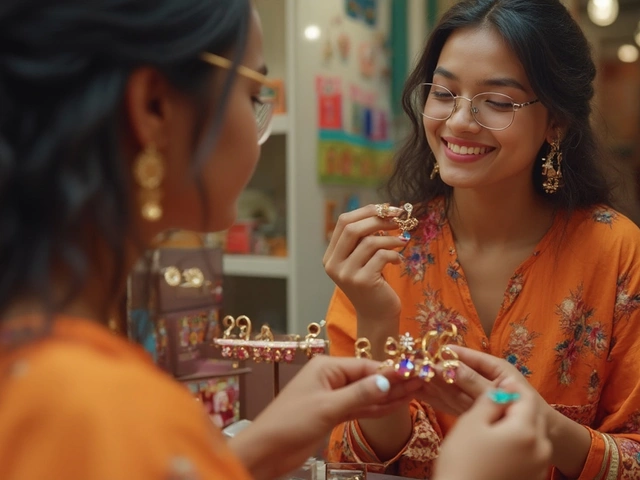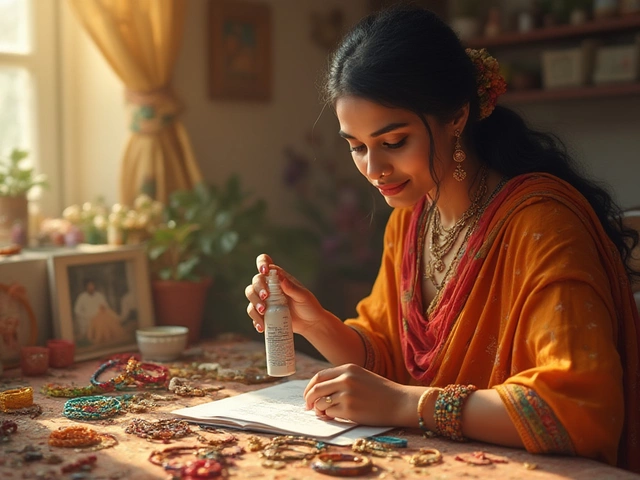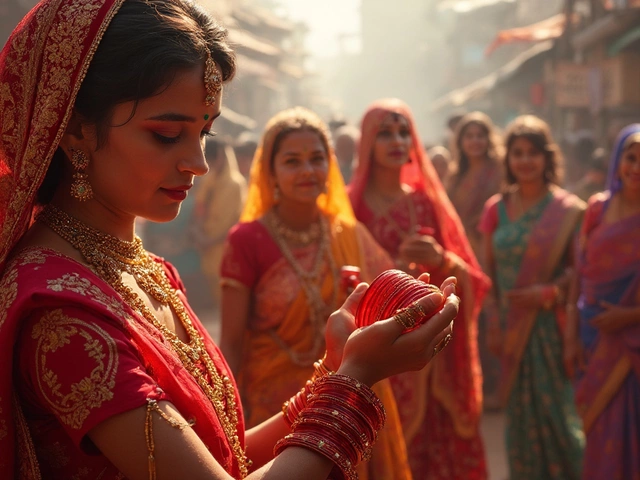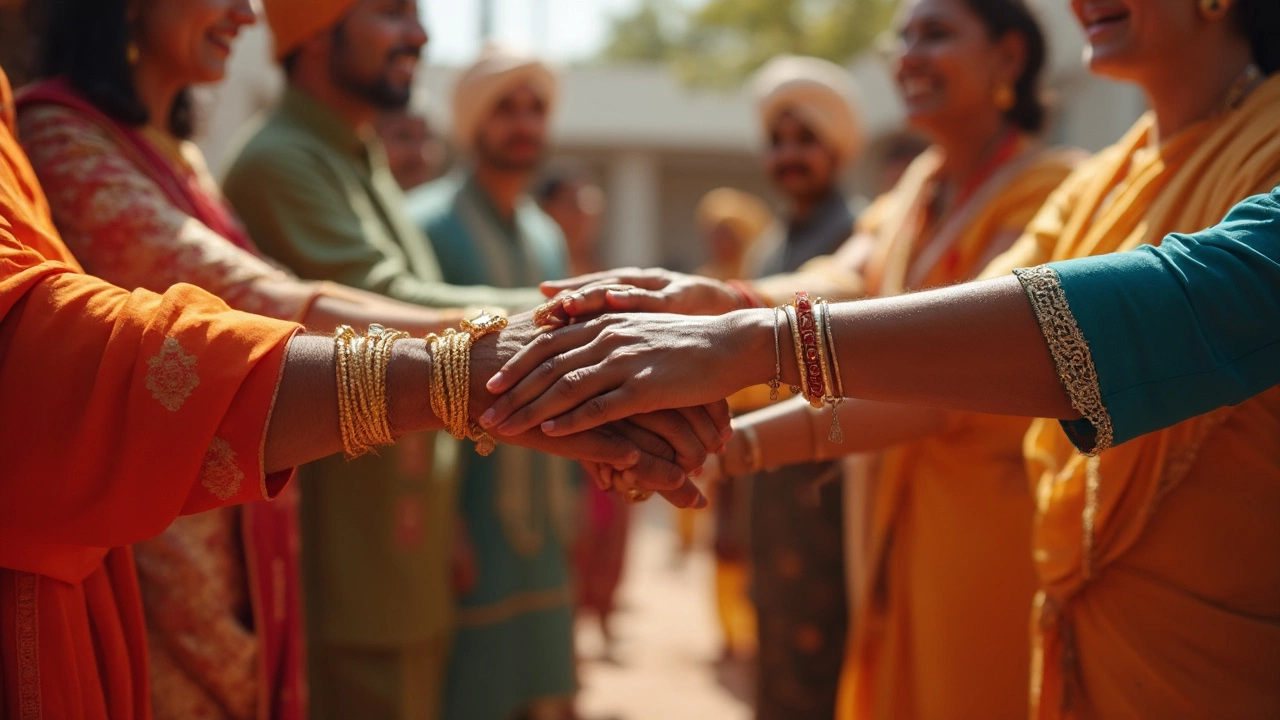
Ever catch yourself wondering, seriously, does the kada go on the left or the right hand? You’re not alone—this question pops up everywhere, from wedding prep to casual family chats. The answer isn’t as clear-cut as you’d hope, but knowing the backstory helps you make the call that feels right for you.
A kada isn’t just another piece of jewelry in India—it carries tradition, faith, and sometimes even a pack of memories. You’ll spot it on Sikhs, Punjabi folks, and even people outside these communities who love the style. But when it comes to which wrist you wear it on, things can get surprisingly complicated. Some folks swear by strict rules; others follow what feels natural or what looks better with their watch.
If you’ve ever felt stuck between your mom insisting on the right hand and your friend claiming it goes on the left, you’re about to get some clarity. We’ll cut through myths, share tips, and talk about why, for some, this simple bangle means way more than an accessory.
- What Is a Kada and Why Does It Matter?
- Tradition vs. Trends: Hand Placement Explained
- Sikh Customs: The Origin and Significance
- Women, Men, and Kada—Who Wears What Where?
- Regional Variations and Modern Takes
- Tips for Wearing and Styling Your Kada
What Is a Kada and Why Does It Matter?
If you ask anyone in North India about a kada, they’ll know exactly what you mean. It’s that solid metal bangle, usually thick and sturdy, spotted on the wrists of Sikhs, Punjabis, and sometimes even folks in Maharashtra and Gujarat. This isn’t your average Indian bangle—the kada is all about meaning, not just looks.
In Sikhism, the kada is one of the five articles of faith, known as the Five Ks. It represents restraint from evil deeds. The stainless steel or iron used is no accident; it stands for strength and equality. Even folks who aren’t Sikh sometimes put one on for good luck or as a token from a family member. Over the years, the design hasn’t changed much—simple, round, and strong, meant to last a lifetime.
The interesting thing is, the kada isn’t limited to religious reasons. For a lot of people, it’s a family custom. Some wear it from childhood, gifted at ceremonies or milestones like weddings and birthdays. It can symbolize protection, a reminder to do good, or simply a way to be linked to your roots, even if you now live halfway across the world.
Here’s a quick look at why people wear a kada:
- Faith: Especially among Sikhs, it’s a sign of commitment to their religion.
- Tradition: Keeping up family or regional practices.
- Style: Many just like the look—no big ritual needed.
- Symbolism: Protection, luck, or a reminder to act nicely.
Stainless steel is the most common material today, but you’ll still find iron (the old-school way), brass, silver, or even gold in some homes. If you walk through Amritsar or Ludhiana, you’ll spot stalls piled high with kadas in every size.
| Material | Common Use |
|---|---|
| Stainless Steel | Everyday, affordable |
| Iron | Traditional, Sikh ceremonies |
| Brass/Silver/Gold | Special occasions, gifts |
So when people get stuck about which wrist to wear it on, it’s clear this isn’t some regular bracelet—it’s loaded with history, faith, and identity.
Tradition vs. Trends: Hand Placement Explained
Let’s get right to the point: which wrist do you actually wear a kada on? Traditionally, Sikhs (especially men) wear the kada on their right hand. This comes from the times when wearing objects on your dominant hand made them less likely to fall off or get lost—plus, most people are right-handed, so it stuck. In fact, Sikh boys often get their first kada alongside their other religious symbols.
But, here’s the twist: customs aren’t locked in stone. Many women, and plenty of guys too, switch it up based on comfort or style. Some even wear the kada on both hands, especially for festivals or special days. Wearing it on the left isn’t wrong—plenty of people do it if that’s their dominant side, or if it fits better with their daily routine (think of left-handed folks, or people who already wear a watch on their right wrist).
If you’re super traditional and want to be authentic, here’s a quick guide:
- Sikh men: usually right hand, tied to religious tradition
- Sikh women: left hand is common, but right is accepted
- Kids: whichever hand is more comfortable or agreed on by the family
Still, there’s no fashion police for this stuff. In some Punjabi and North Indian families, style trends now mix things up—a lot of people put the kada on whichever wrist feels right or balances out other jewelry. Some even stack several kada in different metals—steel, copper, silver—to create a look that’s totally their own.
Curious about what’s happening now? Here’s a quick look at how people are rocking the kada in 2025:
| Group | Preferred Hand | Notes |
|---|---|---|
| Sikh Men | Right | Rooted in tradition |
| Sikh Women | Left/Right | Comfort and choice matter |
| Panjabi Youth | Both/Both wrists | Mixing trends and tradition |
| Non-Sikhs | Any | Mostly for fashion |
At the end of the day, the best spot for your kada comes down to what fits your routine and feels meaningful to you. Tradition is important, sure, but so is making it your own.
Sikh Customs: The Origin and Significance
Let’s clear up the basics: for Sikhs, wearing a kada isn’t just about fashion. It’s a huge part of their faith, going back to the days of Guru Gobind Singh in 1699. That’s when he introduced the kada as one of the “Five Ks” that baptized Sikhs, called Khalsa, must always wear.
This simple steel bangle stands for more than a rule—it’s meant as a constant reminder to do the right thing and stay honest, no matter what. Steel was picked because it’s sturdy and doesn’t rust, showing the idea that faith shouldn’t waver, no matter the situation. The circular shape means something too—no start or end, just like the universe and the kind of unity Sikhs believe in.
- Traditionally, most Sikh men wear the kada on their right hand. This comes from the right hand being used for important actions, like taking oaths or showing respect.
- However, some Sikhs, especially left-handed ones or those using their left for daily tasks, choose the left hand for comfort or practicality.
- For Sikh women, the rules are even looser—they wear it on whichever wrist feels right or fits their look best.
This isn’t just “old rules only.” According to some 2023 survey data from SikhNet, about 65% of Sikhs stick with the traditional right hand, while the rest go with the left or even switch it up depending on their routine.
| Hand Worn | % of Sikhs (2023) |
|---|---|
| Right | 65% |
| Left | 28% |
| Both/Alternate | 7% |
Bottom line? There’s a tradition, but flexibility too. If you’re wearing a kada as a Sikh, it’s way more about what it means than which arm it’s on. That’s what keeps this tradition alive—and personal.
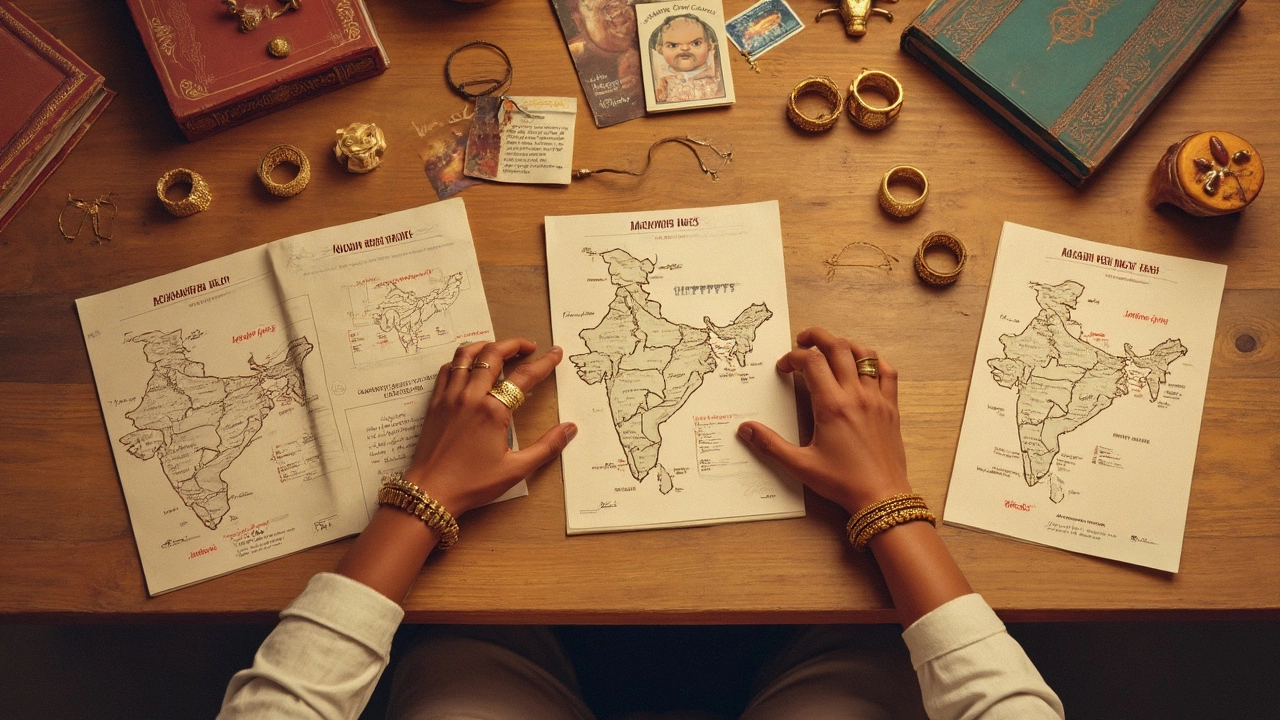
Women, Men, and Kada—Who Wears What Where?
This whole kada placement business can get confusing, especially since so many different people wear them for different reasons. So what’s the actual deal for men versus women? Let’s cut to the chase.
Traditionally, Sikh men wear the kada on their right hand. That’s because the right is often considered more ‘active’ and auspicious, and it’s linked to religious rituals. In fact, if you walk into a Gurdwara or see a Sikh man from Punjab, there’s a huge chance you’ll spot his kada on the right wrist. For some, it’s a non-negotiable thing passed down from dads to sons.
Women, on the other hand, usually have more flexibility. Most Sikh and Punjabi women can wear the kada on either hand—even both hands if they want! Sometimes, it’s about what complements other jewelry (think bangles and bracelets), or just which wrist feels more comfy for work or daily tasks. In mixed families or in cosmopolitan cities, you’ll find women often matching their kada to their watch—left hand if the watch is on the right, and vice versa.
- If you’re at a special religious event—right wrist is safest for everyone.
- For everyday style or casual looks, wear your kada wherever it feels comfortable or fits with your other jewelry.
- For kids, parents usually start out with the right hand for boys and leave it open for girls.
Things switch up in other regions or families too. Some Rajasthani or Gujarati women mix kada with colored bangles and layer them up on both hands. South Indians who follow the bangle traditions may have their own style that mixes metal and glass bangles together.
Check out this quick summary of typical kada wearing customs across genders:
| Group | Common Kada Hand | Special Notes |
|---|---|---|
| Men (Sikh) | Right | Religious tradition |
| Women (Sikh/Punjabi) | Left, Right, or Both | Flexible, often style-based |
| Children | Right for boys, flexible for girls | Usually follows family habit |
The bottom line? When it comes to kada, men tend to lean right, women have options, and the rules aren’t set in stone. Ask your family what they do, but if you’re going solo, just pick the hand that feels right—you’ll be in good company either way.
Regional Variations and Modern Takes
If you ask ten people across India where the kada should go, you’ll get at least five different answers. In Punjab, which is the heartland of Sikhism, men mostly wear the kada on their right hand, especially for religious reasons. This practice goes way back and is seen as sticking closest to tradition. But cross the border into Haryana or Delhi, and you’ll see just as many people choosing the left wrist simply because it feels more comfortable—or it doesn’t clash with their watch.
Head down south, and you’ll notice kadas worn less as a religious marker and more as a fashion statement—sometimes on either hand. For example, in Maharashtra and Gujarat, artisans have started making kadas that match with everyday clothes or even formal wear, not just traditional Indian outfits. Even Bollywood has played a part in changing minds; movie stars donning chunky kadas or stylish versions have made it cool for both men and women to pick up this accessory, no matter which hand they choose.
The last decade has seen a huge uptick in people treating kada as unisex jewelry, not just a men's thing. Look at younger folks in big cities: some stack several slim kadas with other bracelets or watches. Others go for oversized metal kadas to make a style statement. The rise of online stores means you can now find hundreds of designs and security clasps to fit any wrist, left or right.
It’s not just a North Indian or Sikh thing anymore. Check out this quick look:
| Region/Community | Traditional Hand | Modern Practice |
|---|---|---|
| Punjab (Sikh) | Right | Still mainly right |
| Haryana/Delhi | Mixed | Left or right, often practical |
| South India | Varies, less common | Mostly for styling, any hand |
| Urban Youth | No strict rule | Either, sometimes both |
If you’re into mixing older traditions with modern style, you’re in a great spot. The only thing that’s changed more than the materials and designs is the idea that there’s just one correct way to wear your kada. These days, culture and personal vibes matter more than strict rules.
Tips for Wearing and Styling Your Kada
Picking out a kada is just the first step—figuring out how to rock it every day is a whole different game. Whether you’re wearing it for religious reasons, family tradition, or just because it looks cool, a few smart choices can make a big difference. Here’s how to get it right, both for style and comfort.
Choose the Right Size: Don’t settle for a bangle that keeps slipping off or digs into your skin. Measure your wrist at its widest point—usually at the knuckles when you tuck your thumb in. Most shops will have a size chart, and it’s smart to try the kada on if you can. A well-fitted kada won’t slide off easily but shouldn’t pinch, either.
Pick the Best Hand: There’s no universal rule, but if you follow Sikh traditions, wear it on the right hand. Other groups—Punjabis, or even non-religious wearers—often pick whichever hand feels natural. It’s totally fine to go with your daily routine: right for tradition, left for convenience, or the wrist where you don’t wear a watch. Some people even wear a kada on both hands—especially during celebrations or weddings.
- Work and Safety: If you use your hands a lot—say typing, driving, or manual work—it’s smart to wear the kada on your non-dominant hand. That way, it won’t get in the way, or worse, get damaged.
- Stack or Go Solo? Young folks love stacking their kada with watches, friendship bands, or even other traditional bangles. Just keep the stacking light—too much, and you risk scratching your kada or making it look bulky.
- Material Choices: The classic steel kada is super popular among Sikhs, but you’ll also spot gold, silver, copper, and even leather ones. Each look has its own vibe—silver for a subtle touch, gold for festivals, and copper if you believe in its “health benefits.”
- Keep It Clean: Kadhas collect sweat and grime, so wipe it down with a soft cloth every so often. If it’s steel, a little soap and water does the trick. For precious metals, skip the harsh chemicals and stick to gentle cleaning.
Here’s a quick look at who wears what style, usually:
| Community | Common Hand | Material |
|---|---|---|
| Sikh | Right | Steel (sarab loh) |
| Punjabi (non-Sikh) | Either | Steel, Silver, Gold |
| Casual/Modern Wearers | Either/Both | Steel, Silver, Gold, Leather |
Remember, comfort comes first. If you find your kada getting snagged or uncomfortable in your daily life, it’s totally okay to adjust how, where, or even when you wear it. At the end of the day, wear it how you like—because a kada is as much about you as it is about tradition.
